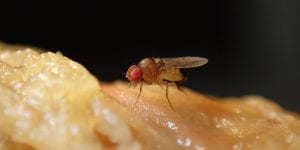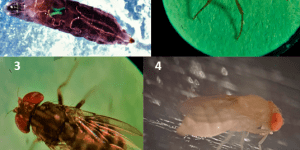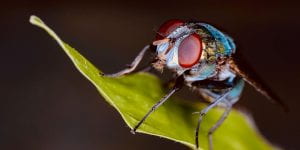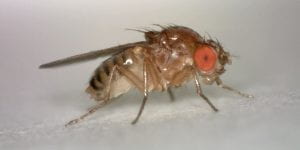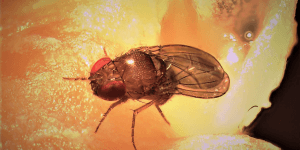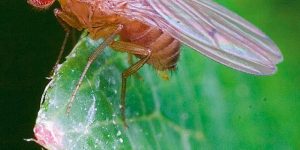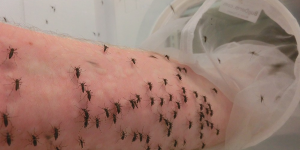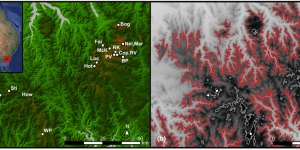Tag: drosophila
-
Professor Michael Ashburner 23 May 1942 – 7 July 2023
By Ann Stocker Michael Ashburner died last year at the age of 81. Most researchers know his 12-volume collection on the Genetics and Biology of Drosophila and his encyclopedic “Drosophila A Laboratory Handbook” with its accompanying Laboratory Manual. Michael was not just interested in his own work. He was passionate about genetics as a whole […]blogs.unimelb.edu.au/pearg/2024/09/24/professor-michael-ashburner-23-may-1942-7-july-2023
-
The fly DNA fighting killer bacteria
Dr Perran Stott-Ross and Professor Ary Hoffmann Artwork by Tank Monsternova https://www.monsternova.art/ This article was first published on Pursuit. Read the original article. The more we learn about the biological world, the more complex it becomes. Nowhere is this more apparent than in recent discoveries about the ways in which microorganisms influence their hosts. The […]blogs.unimelb.edu.au/pearg/2023/03/29/the-fly-dna-fighting-killer-bacteria
-
The Scaptodrosophila, an Australian drosophilid genus
Ann J. Stocker Scaptodrosophila are a diverse group of flies whose appearance is very similar to the widespread and widely studied Drosophila. The genus is estimated to have diverged within the drosophilid lineage during the Cretaceous period about 70 million years ago. It was originally considered a subgenus of Drosophila and called Pholadoris in earlier […]blogs.unimelb.edu.au/pearg/2022/05/09/the-scaptodrosophila-an-australian-drosophilid-genus
-
Fly infertility shows we’re underestimating how badly climate change harms animals
Belinda van Heerwaarden, The University of Melbourne and Ary Hoffmann, The University of Melbourne Evidence of declining fertility in humans and wildlife is growing. While chemicals in our environment have been identified as a major cause, our new research shows there’s another looming threat to animal fertility: climate change. We know animals can die when […] -
Male fertility ‘precariously close’ to climate change extinction limits
The loss of fertility in males as a result of climate change, particularly in the tropics, may be a better predictor of vulnerability to extinction by Dr Belinda van Heerwaarden This article was first published on Pursuit. Read the original article As temperatures rise across the globe, species will increasingly face environmental conditions beyond their […] -
Using genomics to determine the adaptive potential of populations
Words: Ary Hoffmann One of the central tenets of conservation biology is that high levels of genetic variation in natural populations is important for their long-term survival. High levels of variation allow populations to adapt to changing environments through evolution. This process is now recognised as being extremely fast when selection pressures are high. In […] -
A new and unusual Wolbachia bacteria from Drosophila flies limited to the female sex
Words: Ary Hoffmann Cover image: Perran Ross As Wolbachia bacteria that live inside insect cells continue to be discovered and studied in detail, our appreciation of the diverse ways in which these bacteria interact with their hosts continues to expand. In past work we have found Wolbachia that cause embryo death when infected males mate […] -
The Wolbachia pandemic | Symbionts spread rapidly across highly diverged flies
Words: Perran Ross Cover photo: Andrew Weeks Wolbachia are perhaps the most prevalent bacterial symbionts on earth. Of the millions of insect species, Wolbachia are estimated to infect up to half of them. These bacteria are renowned for the effects they exert on their hosts, which can often be quite dramatic. Some Wolbachia strains are […] -
Study Shows Rapid Evolution in Lab-Reared Insects | Perran and Ary’s new paper covered in Entomology Today
Perran and Ary’s lab adaptation review paper is fresh off the press and immediately generating interest. Follow the link below to Entomology Today to read all about it. Study Shows Rapid Evolution in Lab-Reared Insects -
Fresh publications!
Climate contributes to the evolution of pesticide resistance | James Maino, Paul Umina, Ary Hoffmann Abstract The evolution of pesticide resistance through space and time is of great economic significance to modern agricultural production systems, and consequently, is often well documented. It can thus be used to dissect the evolutionary and ecological processes […]

